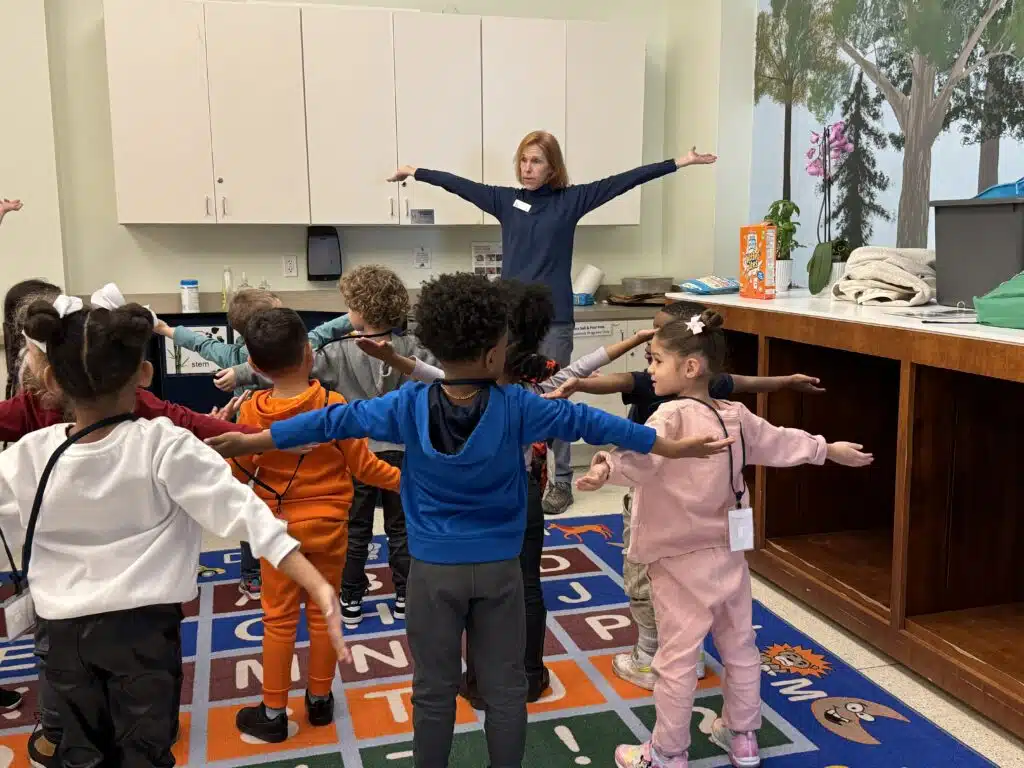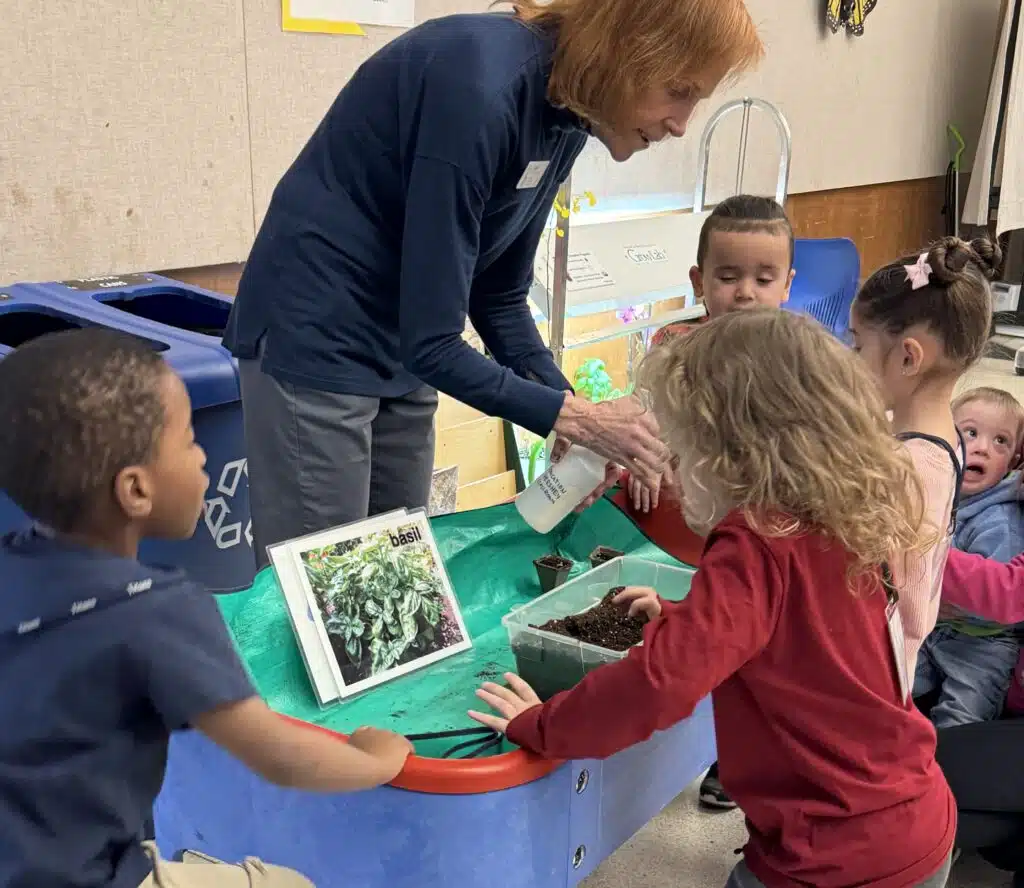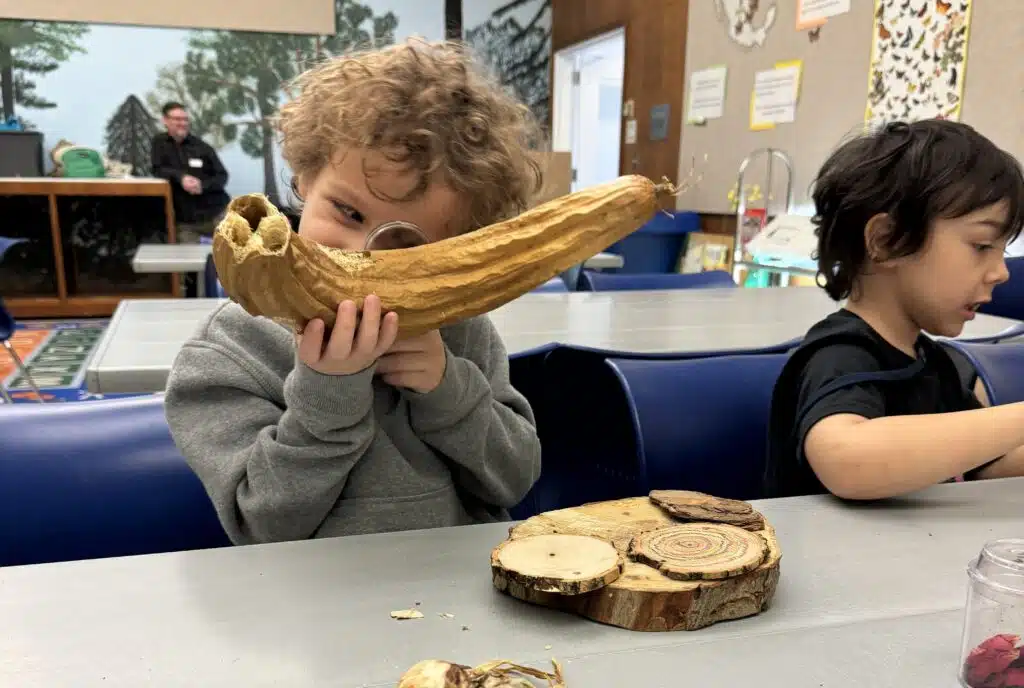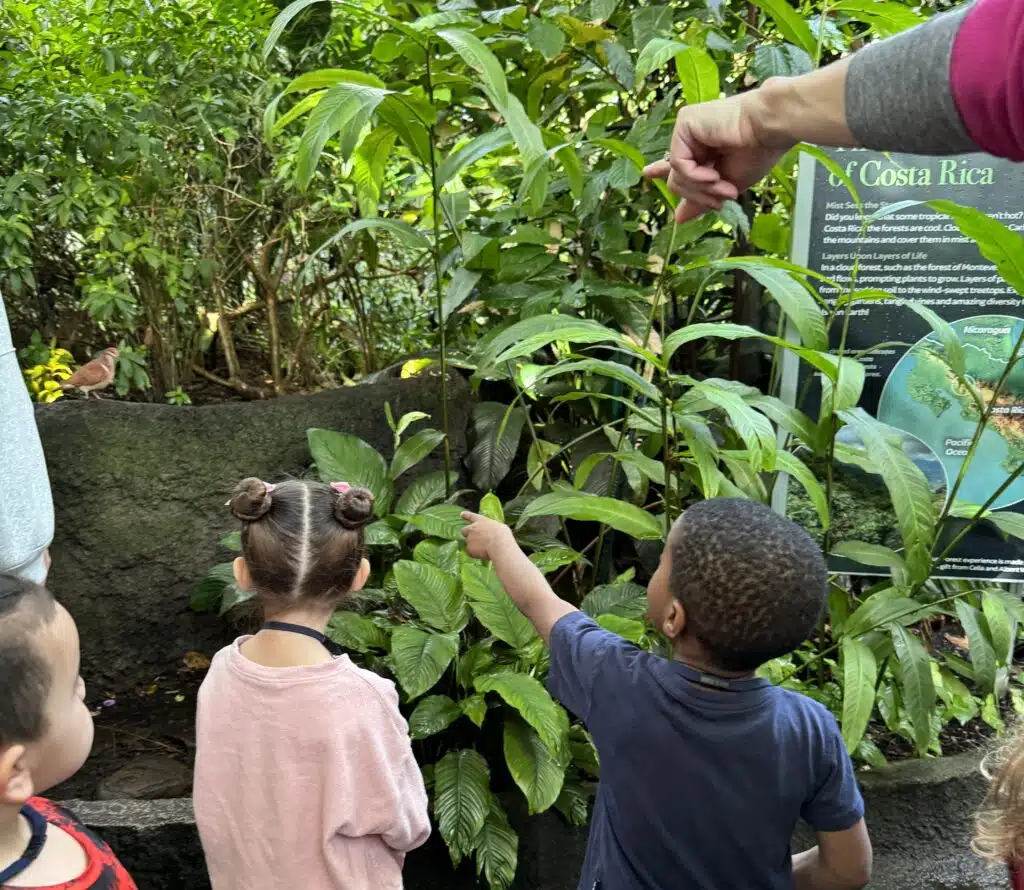Plants & Me at Cleveland Botanical Garden Delights Young People
March 13, 2024

Last Thursday, the Cleveland Botanical Garden welcomed Lorain’s Hawthorne preschool students through the Early Learning Initiatives (ELI) program. Holden Forests & Gardens partners with Lorain Historical Society, Lorain County Preschools, Cuyahoga County Preschools, and University Circle. The ELI Program, also known as Plants & Me, engages preschool students in active learning activities that get them ready for school and ask questions about the world. Plants & Me invites young learners to explore the ways in which people use and interact with plants in our everyday lives, and to discover what things plants need to survive in their habitats.
Minds-On Learning
Holden Forests & Gardens ELI school volunteer, Katy, led the group of eager students through the brisk orchid sunrise and into Hershey Classroom. Each kid was amazed by the burst of orchids on their way to the classroom. They were asking all sorts of questions about the blooms and how they were all the way up in the air.
“When the kids are this age, they are so curious about everything around them,” said Katy.
The program opened with asking the kids what they ate for breakfast. Answers came back as cereal, apples, pancakes and bananas.
“Did you know that everything you had for breakfast is made from plants,” said Katy. “Your cereal and pancakes are made from wheat, and wheat is a plant.”
Next, the students learned the ‘Plants Parts Dance’.
“The roots in the soil grow up into a stem, open up the leaves and then… flower!”, Katy exclaimed. “Now everybody do it with me.”

The kids put their hands to their feet for roots, slowly brought their hands together and put them above their head for stem, separated their hands for leaves and arms out for flower. This interactive activity helps the kids visualize the process of plant growth.
Hands-On Learning
After the plant parts dance was over, the kids broke off into groups. There were stations set up for the kids to gain hands-on experiences. Each kid was able to plant their own basil seed and take it home to watch it grow. A small group of kids gathered around the table and waited patiently for instructions from Katy. First, they filled their cup with soil. Then they made a hole in the soil with their finger and added the seeds. Finally, add 10 sprays of water per pot. The kids even came up with a countdown dance for each basil plant.

One student said, “this place is so cool!” as he scooped up the dirt into the pot.
In the next station, the students had to use their senses. The table had a variety of tree branches, bark, pinecones, garlic, and even a loofa plant. One student picked up the pinecone and started to observe between the scales.
“Do you know what kind of plant that is?’” asked the teacher. “Yes. It’s a pom pom,” the girl said followed by a giggle.
The girl then told the teacher that she thinks that spiders and other bugs like to hide in the pinecone when the weather gets cold and rainy. Next to her, another student picks up the magnified glass and has the loofa pressed up against his face. He finds that the inside of the loofa has little black seeds.

The class chaperone explains how loofas are used as sponges and the black seeds can make even more loofas to use in the future. Through these hands-on learning experiences, the kids are given a meaningful experience that will help them commit content to memory.
Hearts-on Learning
The final part of Hawthorne Preschool’s visit was a trip through the glasshouse. Students were encouraged to use their sight, smell, and hearing while walking through the two biomes. Katy told the students that they will see animals like birds, tortoises, and lizards.
One student said, “I want to see a lion.” which caused his peers to burst into laughter.
Upon entering the Madagascar biome, the students were pointing out the tree roots and the “spikey” plants that they saw. Katy explained that the thorns protect the plant from getting eaten by animals. The Costa Rica biome was the final place they visited before lunch.
“A bird!” one boy said with excitement. The students were able to see ducks, frogs, bugs, and other species within the biome.

Katy explained that the chocolate and bananas they eat all come from trees. She then pointed out the live cacao, banana, and coffee trees around them. The emotional advantages provided by museum visits stem from the personal connections formed, leading to memorable experiences.
Audriana Carmona
Communications Specialist













